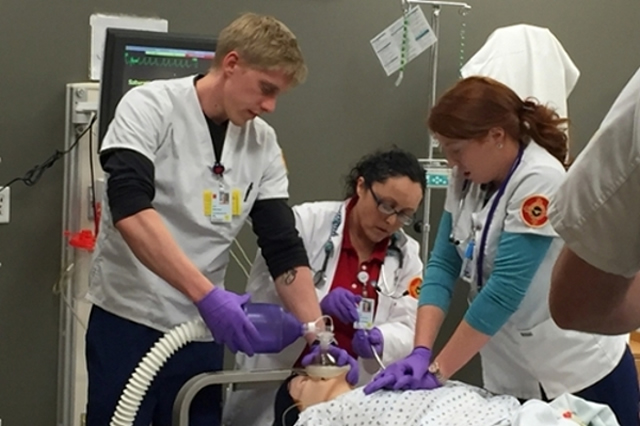
Nursing ETDs
Publication Date
7-2-2013
Abstract
The purpose of this study was to determine whether the location of hospitality venues considering; rurality, presence of local ordinances, and socioeconomic status, influenced the quantity of tobacco smoke pollution in a predominantly rural state. The study built on current scientific literature in four aspects. First, it was the first U.S. statewide study on tobacco smoke pollution levels in hospitality venues. Second, it quantified indoor tobacco smoke pollution specifically in rural areas. Third, it used random sampling, a method rarely used in studying indoor tobacco smoke pollution. Fourth, it analyzed tobacco smoke exposure as a function of socioeconomic status. A stratified random sample of 136 restaurant and bars were assessed, using a modification Roswell Cancer Park Institutes method, for the indoor air quality indicator of particulate matter that was 2.5 μm aerodynamic diameter or smaller (PM2.5). A unique partial mediation model found 69.1% of smoke-free policy's impact on tobacco smoke pollution was mediated by observed smoking and 30.9% was the direct impact of policy on tobacco smoke pollution levels. A significant association (Welch's F(2, 43.63) = 9.55, p < .001) between rurality and tobacco smoke pollution in bars was also observed. A significant association (R2 =0.51, F(3,131)=70.47, p < .001) between local smoke-free laws and tobacco smoke pollution depended upon the venue type. Compliance was significantly lower in venues in communities without local ordinances (Fisher's Exact Test, p< .01, 2-tailed) and in co-located venues (Fisher's Exact Test, p< .01, 2-tailed). In conclusion, smoke-free laws had an indirect and direct impact on tobacco smoke pollution. As rurality increased tobacco smoke pollution in bars significantly increased. The impact of local ordinances on tobacco smoke pollution levels depended on the venue type. Compliance with laws increased significantly in communities with a local ordinance and decreased significantly in co-located venues. Continued recognition of the disparities in exposure to tobacco smoke pollution in rural areas is needed. Future studies should determine if the mediation model can be replicated. Additional studies of tobacco smoke exposure and policy impact in rural areas are needed. Further research of poverty influences on tobacco smoke pollution levels in hospitality venues is recommended.
Degree Name
Nursing
Level of Degree
Doctoral
Department Name
College of Nursing
First Committee Member (Chair)
Ridenour, Nancy
Second Committee Member
Averill, Jennifer
Third Committee Member
Travers, Mark
Sponsors
Robert Wood Johnson Foundation Nursing and Health Policy Collaborative at the University of New Mexico (grant 60128); ND Center for Tobacco Prevention and Control Policy, Bismarck, ND
Keywords
tobacco, smoke, public health, policy, nursing, particulate matter, secondhand smoke
Language
English
Document Type
Dissertation
Recommended Citation
Buettner-Schmidt, Kelly. "A Rural Tobacco Smoke Pollution Study." (2013). https://digitalrepository.unm.edu/nurs_etds/11
